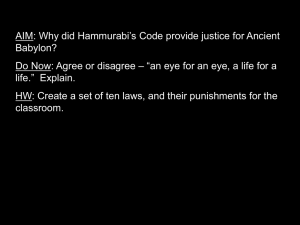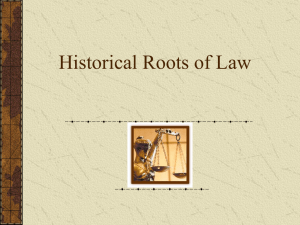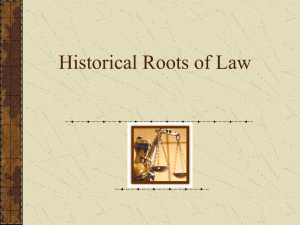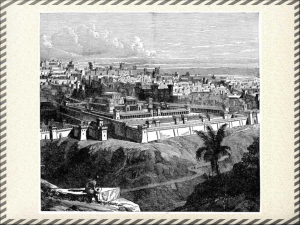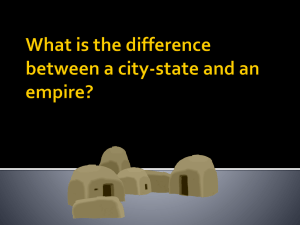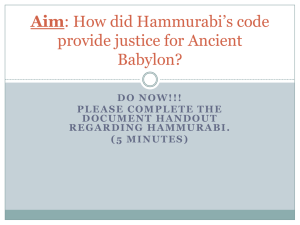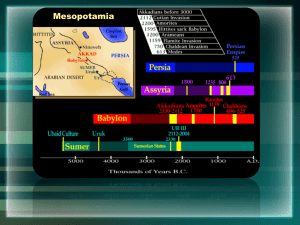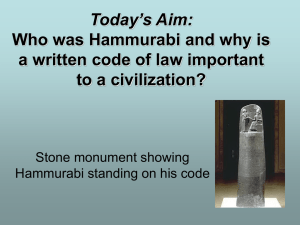LG 3 -- Comparing Hammurabi`s Code of Laws
advertisement
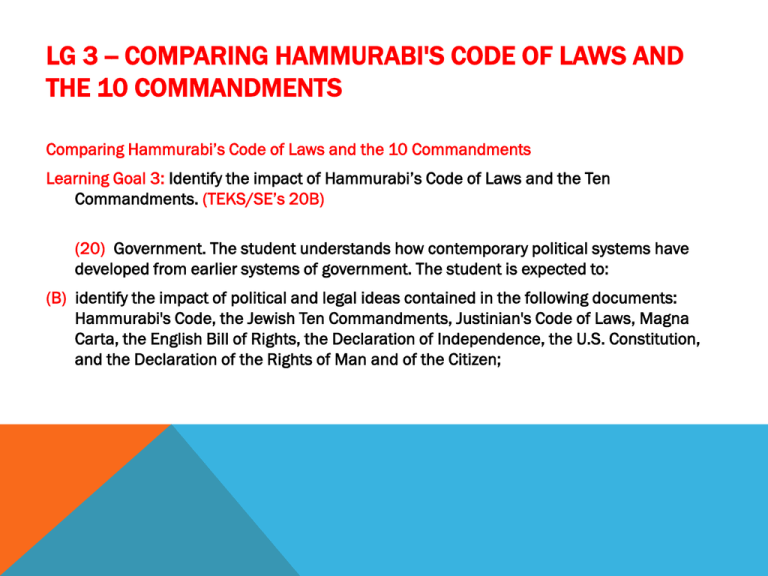
LG 3 -- COMPARING HAMMURABI'S CODE OF LAWS AND THE 10 COMMANDMENTS Comparing Hammurabi’s Code of Laws and the 10 Commandments Learning Goal 3: Identify the impact of Hammurabi’s Code of Laws and the Ten Commandments. (TEKS/SE’s 20B) (20) Government. The student understands how contemporary political systems have developed from earlier systems of government. The student is expected to: (B) identify the impact of political and legal ideas contained in the following documents: Hammurabi's Code, the Jewish Ten Commandments, Justinian's Code of Laws, Magna Carta, the English Bill of Rights, the Declaration of Independence, the U.S. Constitution, and the Declaration of the Rights of Man and of the Citizen; Comparing Hammurabi’s Code of Laws and the 10 Commandments Learning Goal 3: Identify the impact of Hammurabi’s Code of Laws and the Ten Commandments. (TEKS/SE’s 20B) FORMS OF GOVERNMENT IN EARLY CIVILIZATIONS Monarchies- a form of government controlled by a single family that passed power from one generation to the next, creating dynasties Examples: Many Sumerian city-states came under the rule of dynasties as well as civilizations in China JUDAISM Abraham – founder of Judaism Judaism – religion of the Hebrews first monotheistic religion Monotheism – belief in one God Polytheism – belief in many Gods The Ten Commandments: In the Hebrew civilization, the Ten Commandments are a list of religious and moral imperatives which, according to Biblical tradition, were written by God and given to Moses on Mount Sinai in the form of two stone tablets. They feature prominently in Judaism and Christianity. Because the origins of Christianity are rooted in Judaism, the Ten Commandments are often considered by many Americans to be the foundation of U.S. law and sometimes placed in judicial buildings and other legal structures. HAMMURABI’S CODE Hammurabi’s Code is the legal code of King Hammurabi (1792 B.C.-1750 B.C.) of Mesopotamia. His law was severe and specified crimes and punishments which fit the crimes to ensure uniformity and to help judges impose penalties. This collection of 282 written codes from ancient Mesopotamia was one of the earliest known legal systems that regulated people’s relationships with one another. These laws were engraved on stone pillars in cuneiform writing and publically displayed for all to see and obey as the punishments for violating the Code of Hammurabi were severe. IMPACT OF HAMMURABI’S CODE Established the idea that government regulates criminal and civil matters Established statutory laws as a basis of social control and necessary for society Reflected the idea that punishment should fit the crime Established the idea that all in the society should follow the legal code BUT punishments in Hammurabi’s Code varied based on social class THE TEN COMMANDMENTS Moral and religious code believed to have been given by God through Moses to the Hebrews IMPACT: Became the moral basis of both Judaism and Christianity Organized the tradition of monotheism (belief in one God)
